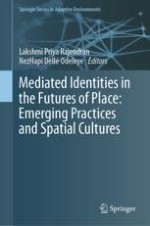2020 | OriginalPaper | Buchkapitel
2. Media Technologies: From Transcending Space to Socio-formative Spheres
verfasst von : Maryam Fazel, Lakshmi Priya Rajendran
Erschienen in: Mediated Identities in the Futures of Place: Emerging Practices and Spatial Cultures
Aktivieren Sie unsere intelligente Suche, um passende Fachinhalte oder Patente zu finden.
Wählen Sie Textabschnitte aus um mit Künstlicher Intelligenz passenden Patente zu finden. powered by
Markieren Sie Textabschnitte, um KI-gestützt weitere passende Inhalte zu finden. powered by
